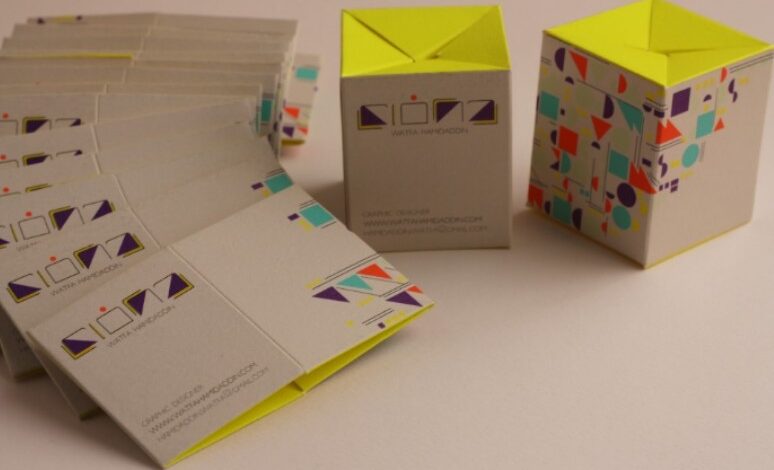The Ubiquity and Evolution of Cardboard Boxes in Modern Packaging

Cardboard boxes have become an integral part of modern commerce and daily life. They serve as the backbone of the packaging industry, facilitating the safe and efficient transport of goods worldwide. From small businesses to multinational corporations, the use of cardboard boxes spans across various industries, making them indispensable. This blog will explore the multifaceted role of cardboard boxes, their manufacturing process, the industries that rely on them, wholesale dynamics, and the latest trends in this ever-evolving sector.
The Versatility of Cardboard Boxes in Packaging
Cardboard boxes are renowned for their versatility and adaptability. They come in various shapes and sizes, designed to meet the specific needs of different products. The primary material used in the production of these boxes is corrugated cardboard, which consists of a fluted paper layer sandwiched between two flat linerboards. This construction provides strength and durability while remaining lightweight and cost-effective.
Types of Cardboard Boxes
- Regular Slotted Container (RSC): The most common type, used for shipping and storage. All flaps are the same length, and the two outer flaps meet at the center when closed.
- Half-Slotted Container (HSC): Similar to RSC but without one set of flaps. Ideal for retail display or easy access.
- Full-Overlap Slotted Container (FOL): Features flaps that fully overlap each other, providing extra strength for heavy or fragile items.
- One-Piece Folder (OPF): Typically used for books and framed pictures. The box is made from a single piece of cardboard with a flat bottom and sides that fold up to form the sides and top.
- Die-Cut Custom Boxes: Custom-shaped boxes designed to fit specific products. Used extensively in the retail sector for product displays.
Packaging Materials and Sustainability
The primary material for custom product boxes is corrugated fiberboard, prized for its strength, durability, and lightweight properties. The fiberboard is typically made from recycled paper and virgin wood pulp, adhering to environmental standards. The sustainability aspect of cardboard is a significant advantage, as it is biodegradable and recyclable.
Sustainable Practices
The packaging industry is increasingly focused on sustainability, driving innovations in cardboard production. Key sustainable practices include:
- Recycled Content: Using a high percentage of recycled fibers reduces the need for virgin materials and minimizes environmental impact.
- Biodegradability: Cardboard is naturally biodegradable, breaking down in a matter of months under proper conditions, unlike plastic.
- Eco-Friendly Inks and Adhesives: Water-based inks and adhesives reduce the use of harmful chemicals, ensuring that the entire packaging is environmentally friendly.
- Reduction in Material Usage: Innovations in design allow for the same level of protection with less material, reducing waste and cost.
Products That Rely on Cardboard Boxes
Cardboard boxes are used across a myriad of industries, each with unique packaging requirements. Here are some sectors where cardboard boxes are indispensable:
Retail and E-Commerce
With the rise of e-commerce, the demand for cardboard boxes has surged. Online retailers rely on these boxes to safely ship products to customers. The versatility of cardboard boxes allows for the packaging of a wide range of products, from clothing and electronics to groceries and household items.
Food and Beverage Industry
Cardboard boxes are used extensively in the food and beverage industry for packaging and transporting goods. They offer protection from contamination and physical damage, ensuring that products reach consumers in optimal condition. Specialized boxes, like those with moisture-resistant coatings, are used for perishable items.
Electronics
The electronics industry requires packaging that provides excellent protection against static, shock, and moisture. Cardboard boxes are often lined with foam or anti-static materials to safeguard sensitive electronic components during transit.
Pharmaceuticals
In the pharmaceutical industry, packaging must meet stringent standards to ensure the safety and integrity of the products. Cardboard boxes are used to package and transport medicines, medical devices, and other healthcare products, often with additional features like tamper-evident seals.
Moving and Storage
Cardboard boxes are essential for moving and storage services. Their ability to be easily assembled, stacked, and labeled makes them ideal for organizing and transporting household and office items during relocations.
The Manufacturing Process of Cardboard Boxes
The manufacturing process of cardboard boxes involves several key steps, each critical to producing high-quality, durable packaging.
Step 1: Pulping
The process begins with pulping, where wood chips or recycled paper are broken down into fibers. The pulping process involves mechanical or chemical treatments to separate the fibers and remove impurities.
Step 2: Papermaking
The fibers are then processed into paper on a papermaking machine. The machine spreads the fibers into a thin, even layer, which is then dried and pressed to form large rolls of paper, known as linerboard and medium.
Step 3: Corrugating
The corrugating process involves passing the medium through heated rollers to create the fluted pattern. The fluted medium is then glued between two linerboards to form corrugated cardboard. This combination of layers provides the strength and rigidity needed for the boxes.
Step 4: Cutting and Shaping
The corrugated cardboard is cut into large sheets and then shaped into boxes using die-cutting or slitting machines. The machines cut, crease, and score the cardboard to create the desired box shapes and sizes.
Step 5: Printing and Finishing
Finally, the boxes are printed with branding, product information, or handling instructions. This can be done using various printing techniques, including flexography, digital printing, and lithography. The boxes are then folded and glued to form the final product, ready for shipment.
Wholesale Dynamics in the Cardboard Box Industry
Wholesale suppliers play a crucial role in the cardboard box industry, providing businesses with the bulk quantities needed for packaging operations. Wholesale dynamics are influenced by several factors, including pricing, customization options, and supply chain efficiency.
Bulk Purchasing
Buying custom cardboard boxes in bulk offers significant cost savings for businesses. Wholesale suppliers provide competitive pricing, allowing companies to reduce packaging costs and improve their profit margins. The larger the order, the more favorable the pricing, making it an attractive option for high-volume users.
Customization and Branding
Wholesale suppliers often offer customization services, allowing businesses to tailor their packaging to their specific needs. This includes custom sizes, shapes, and printing options. Branded packaging helps companies create a professional image and enhance brand recognition.
Supply Chain Efficiency
Efficient supply chain management is essential in the wholesale cardboard box industry. Suppliers must maintain adequate inventory levels to meet customer demands and ensure timely delivery. Just-in-time (JIT) inventory systems are commonly used to optimize stock levels and reduce storage costs.
Quality Assurance
Maintaining consistent quality is paramount for wholesale suppliers. Rigorous quality control processes ensure that the cardboard boxes meet industry standards and customer specifications. This includes testing for strength, durability, and moisture resistance.
Latest Trends and Innovations in Cardboard Boxes
The cardboard box industry is constantly evolving, driven by advancements in technology, changing consumer preferences, and environmental considerations. Here are some of the latest trends and innovations shaping the industry:
Smart Packaging
Smart packaging solutions are gaining traction, incorporating technology to enhance functionality and consumer engagement. QR codes, RFID tags, and NFC chips embedded in cardboard boxes provide product information, track shipments, and offer interactive experiences for customers.
Eco-Friendly Alternatives
Sustainability is a significant focus in the packaging industry, leading to the development of eco-friendly alternatives to traditional cardboard. These include:
- Mushroom Packaging: Made from agricultural waste and mycelium (the root structure of mushrooms), this biodegradable material is a sustainable alternative to cardboard.
- Plant-Based Polymers: Innovations in plant-based polymers are creating new materials that mimic the properties of cardboard while being compostable and renewable.
- Water-Activated Tapes: Water-activated tapes offer a more environmentally friendly sealing option compared to traditional plastic tapes. They bond with the cardboard, providing a secure seal without additional waste.
Lightweight and Durable Designs
Advancements in design and material science are leading to lighter and more durable cardboard boxes. By optimizing the structure and using high-strength materials, manufacturers can reduce the weight of the boxes without compromising on strength, leading to cost savings in shipping and handling.
Digital Printing
Digital printing technology is revolutionizing the customization of cardboard boxes. It allows for high-quality, full-color prints with shorter lead times and lower costs compared to traditional printing methods. This is particularly beneficial for small businesses and e-commerce companies that need to create eye-catching packaging on a budget.
E-Commerce Packaging Solutions
The rise of e-commerce has prompted the development of specialized packaging solutions designed for online retail. These include easy-open designs, tamper-evident features, and return-ready packaging that simplifies the returns process for customers.
Automation and Robotics
Automation is playing an increasingly important role in the cardboard box manufacturing process. Robotics and automated systems improve efficiency, reduce labor costs, and ensure consistent quality. From automated cutting and shaping machines to robotic palletizing systems, these technologies streamline production and enhance productivity.
Conclusion
Cardboard boxes are a cornerstone of the packaging industry, offering versatility, sustainability, and cost-effectiveness. From their diverse applications across various industries to the sophisticated manufacturing processes and wholesale dynamics, cardboard boxes are integral to modern commerce. As the industry continues to evolve, embracing new technologies and sustainable practices, cardboard boxes will remain at the forefront of packaging innovation, meeting the ever-changing needs of businesses and consumers alike.
The future of cardboard boxes lies in balancing efficiency and sustainability while leveraging technology to enhance functionality and consumer engagement. With continued advancements and a commitment to environmental responsibility, cardboard boxes will continue to play a vital role in the global supply chain, ensuring that products reach their destinations safely and securely.



